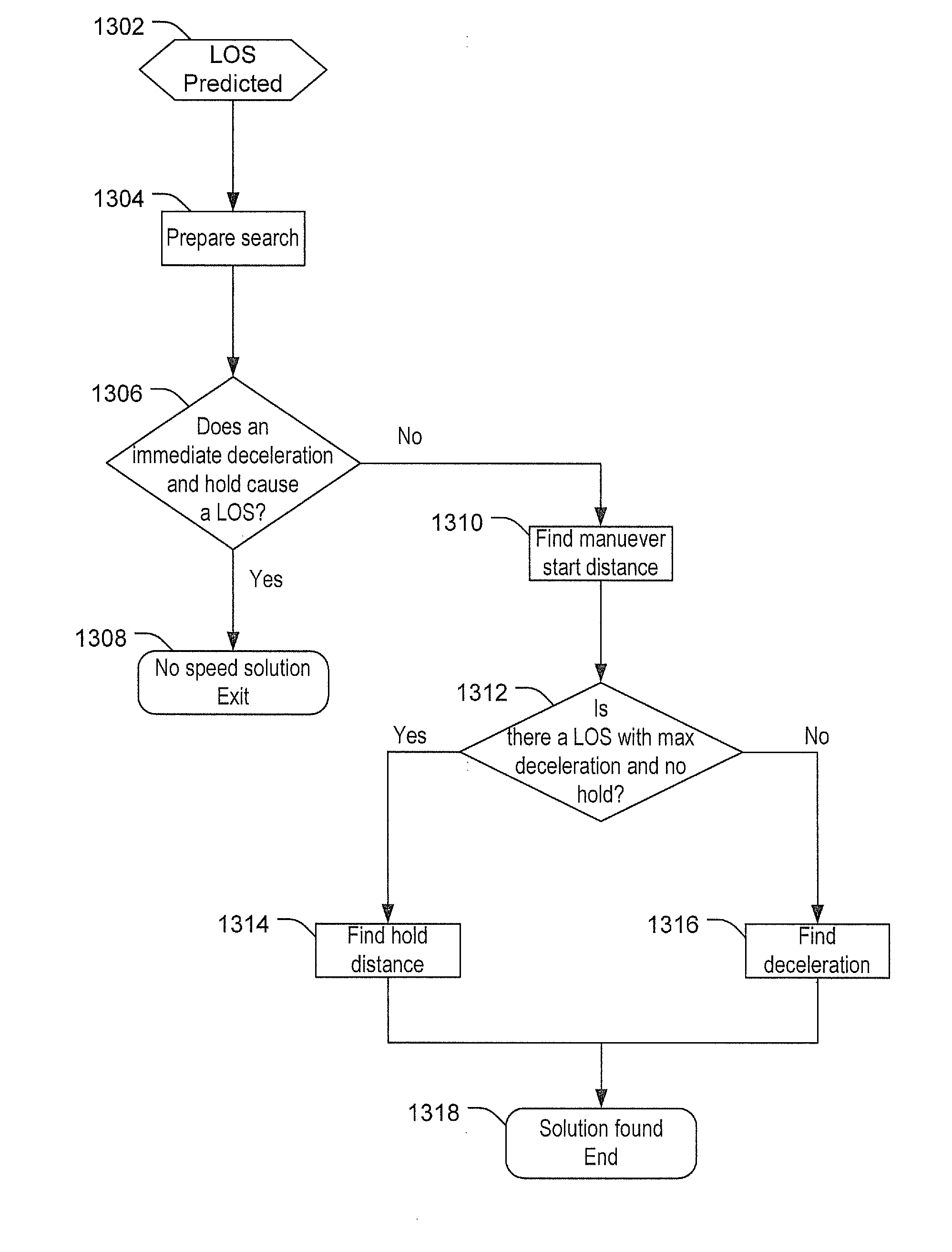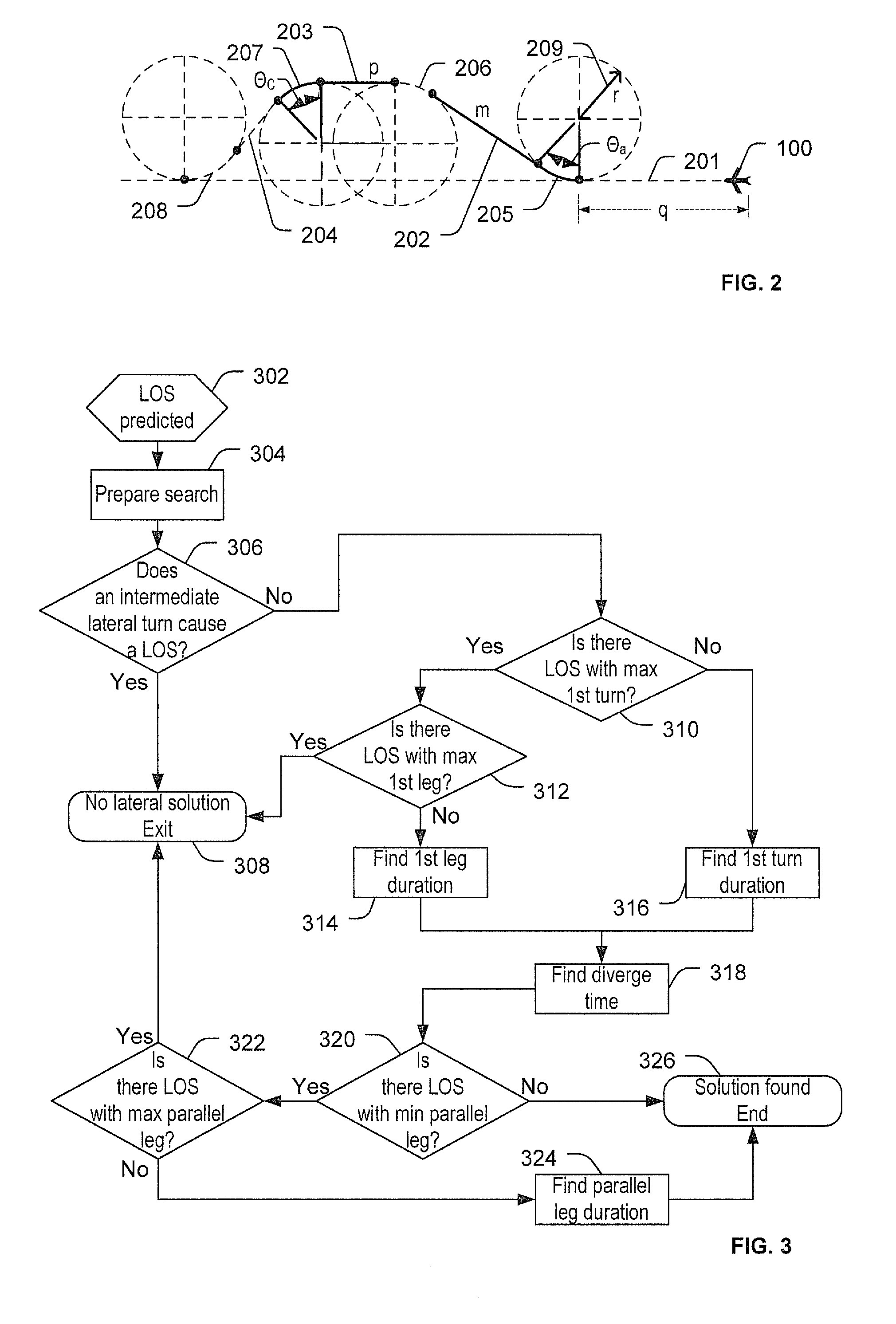Loss of separation avoidance maneuvering
a technology of avoidance maneuvering and loss of separation, applied in the direction of vehicle position/course/altitude control, process and machine control, instruments, etc., can solve the problems of multivariable, complex, and difficult so as to avoid the loss of separation, avoid the effect of potential loss of separation
- Summary
- Abstract
- Description
- Claims
- Application Information
AI Technical Summary
Benefits of technology
Problems solved by technology
Method used
Image
Examples
Embodiment Construction
[0027]To avoid a loss of separation, many variables may be considered, such as variables descriptive of a trajectory of each aircraft (e.g., heading, speed, altitude, etc.). It may be desirable to avoid the loss of separation in a timely and efficient manner (i.e., in a manner that allows both aircraft to reach their destinations as near as possible to an expected arrival time and without either aircraft expending excessive fuel or performing unneeded maneuvers). When efficiency and timeliness are considered, avoiding the loss of separation can be an even more complex, multivariable problem. Embodiments disclosed herein decompose this complex, multivariable problem into a more efficient series of single variable problems. For example, the problem may be modeled as one or more standard zero finding problems and the “false position” method (Regula Falsi method) may be used to solve sub-problems. Decomposing the problem as disclosed herein may provide superior processing times and may ...
PUM
 Login to View More
Login to View More Abstract
Description
Claims
Application Information
 Login to View More
Login to View More - R&D
- Intellectual Property
- Life Sciences
- Materials
- Tech Scout
- Unparalleled Data Quality
- Higher Quality Content
- 60% Fewer Hallucinations
Browse by: Latest US Patents, China's latest patents, Technical Efficacy Thesaurus, Application Domain, Technology Topic, Popular Technical Reports.
© 2025 PatSnap. All rights reserved.Legal|Privacy policy|Modern Slavery Act Transparency Statement|Sitemap|About US| Contact US: help@patsnap.com



